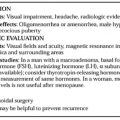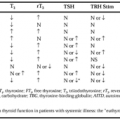RADIOGRAPHIC FINDINGS
Part of “CHAPTER 63 – OSTEOMALACIA AND RICKETS“
The most common radiographic change in osteomalacia is reduced skeletal density, a nonspecific finding with little diagnostic value. More helpful are the less frequently occurring coarsening of trabecular pattern and the Looser zones or pseudofractures.8,9 The loss of distinctness of trabeculae in vertebral bodies is attributed to the loss of secondary trabeculae and to inadequate mineralization of osteoid. Because of softening, the vertebral bodies in more advanced disease may become concave, termed “codfish” vertebrae. Conversely, the vertebral disks are large and biconvex. Compression fractures of the spine occur but are less common than in osteoporosis.
Looser zones are narrow lines of radiolucency that usually transect and lie either at right angles or obliquely to the cortical margins of bones. They typically are bilateral and symmetric. Common sites include the axillary margins of the scapulae, the lower ribs, the superior and inferior pubic rami, the inner margins and neck of the proximal femora, and the posterior margins of the proximal ulnae. Multiple, bilateral, and symmetric pseudofractures in a patient with osteomalacia are called Milkman syndrome.10,11 The pathogenesis of Looser zones is thought by some to be stress fractures that are repaired by the laying down of inadequately mineralized osteoid. Because the pseudofractures often lie adjacent to arteries, others attribute the lesions to mechanical erosion caused by arterial pulsations, a concept that is supported by the arteriographic demonstration that arteries frequently overlie sites of the pseudofractures.8,12 True fractures can occur at these weakened areas.
Stay updated, free articles. Join our Telegram channel

Full access? Get Clinical Tree





